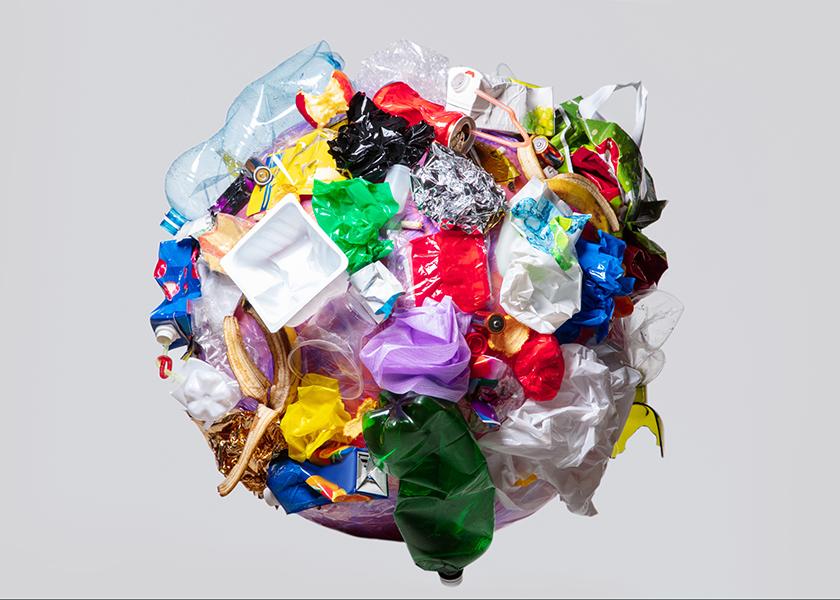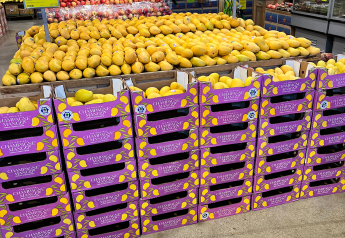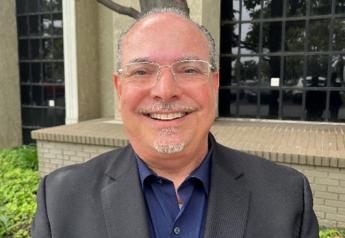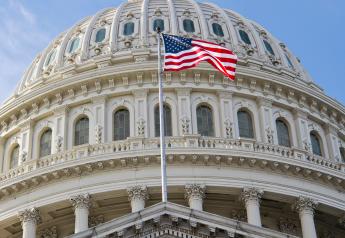Closing the loop: Stemming plastic pollution and fostering a circular economy in produce

As regional governments grapple with decades of single-use plastic waste pollution and shoppers increasingly seek out safe, sustainable packaging options, food companies across the grocery story are witnessing signs that the plastic heyday is over.
In the produce department, once ubiquitous materials like clamshells, soft plastic pouches and rigid colored baskets are facing increased scrutiny.
In one sign of shifting tides, EPA put a bullseye directly on plastic pollution this spring in its drafted National Strategy to Prevent Plastic Pollution. The plan sets ambitious goals to eliminate the release of plastic waste by 2040.
Similarly, the United Nations also recently issued a comprehensive report analyzing the economic models needed to address the effects of the plastics economy. The analysis highlighted the need for a fundamental paradigm shift to flip the current markets. The U.N.’s proposed solution? A circular economy.
“The vision of a circular, zero-pollution plastics economy is one that eliminates unnecessary production and consumption, avoids negative impacts on ecosystems and human health, keeps products and materials in the economy and safely collects and disposes waste that cannot be economically processed,” according to the U.N. report. “This results in permanently increasing material circularity, reducing greenhouse gas emissions and stopping plastic pollution.”
The dream of a circular economy holds promise; who doesn’t want an infinite loop of reused and recycled materials in exchange for bulging landfills? But, while companies, nonprofits and governments set their sights on this vision, it’s a heavy lift to get there.
As a new way of producing and consuming goods emerges, what can the fresh produce industry do to embrace closed loop systems in its supply chains?
Ranking sustainable packaging — not a zero-sum game
“We're constantly working on new materials and new options, because our goal is to have our products be successfully part of a circular economy — that’s the holy grail,” Karen Reed, Kwik Lok global director of marketing and communications, told The Packer.
The packaging manufacturer known for its bag closures starts by seeking out materials that are both effective and able to be made into something else at the end of the product’s life, Reed said.
“It's been so hard to find replacements for plastics because they are inexpensive and they work,” Reed said. “We're trying to find other products that that can function in that same way but that have a better story at the end of life.”
For example, while Kwik Lok’s cellulose fiber-based closure, Fibre Lok, checks the sustainability box — it’s recyclable, compostable and made from recycled materials — the closure is not ideal to use for rough and tumble produce products. Meanwhile, Kwik Lok’s Eco-Lok closure fits produce product needs perfectly and is made from renewably sourced corn and potato starch. However, the Eco-Lok often ends up in a landfill and isn’t recycled, Reed said.
But it’s not a zero-sum game when weighing packaging options.
Even if the closure ends up in a landfill, Reed said, it’s going to deteriorate much faster without leaving any microplastics.
“There are trade-offs,” Reed said. “Our life cycle analysis on a product that we make is different when we make it in Ireland versus Japan versus the U.S., because all the systems that support that production are different; we need to understand that there are geographical impacts as well.”
A member of several U.S. and European plastic pacts, Reed said she’s heartened about the future of plastics and packaging waste, and the company is seeing an increase in end markets for recyclable goods, a key component of a functioning circular economy.
The entire supply chain can support circularity
Corrugated fiber-based packaging is enjoying a resurgence as food companies shift away from plastics. Fibre Box Association Senior Vice President Rachel Kenyon thinks this is largely because corrugated packaging is “the model of a circular packaging solution.”
“Corrugated packaging is a material that is almost always recycled — over 93% in 2022,” Kenyon told The Packer. “Besides the circularity of corrugated packaging — which brings raw materials full circle for production of new products — the industry has demonstrated a long-standing commitment to larger environmental stewardship issues. Corrugated manufacturers have dramatically reduced greenhouse gas emissions through clean energy and manufacturing practices over time to use less fossil fuels, water and other natural resources.”
From Kenyon’s perspective, corrugated boxes are fit the circular economy model not only because the material can be recycled many times over, but also because the material can be engineered minimize product loss and waste.
More importantly, she sees every player in the fresh produce supply chain playing a part in creating a resource efficient, circular supply chain.
“First, grower-shippers and retailers can reduce packaging waste by specifying boxes that are custom designed for the products they will be used to ship. This helps reduce shrink while also minimizing the amount of material needed to protect the delicate fruits and vegetables inside,” Kenyon said.
“Of course, the key to circularity is recovery — so retailers, which are the heroes of corrugated recycling today, recycling almost all corrugated they handle, can help boost recovery by encouraging shoppers to recycle as well, and brands can carry the message to consumers,” she continued.
To understand the footprint, consider the entire product life span
Flexible packaging manufacturer Sev-Rend views its role in the circular economy as a guide to support food companies make the best packaging choice for their product.
“As a packaging manufacturer, we are directly responsible to bring guidance and solutions to the market, so our clients have the best options available to eliminate needless packaging waste, hit their sustainable goals, and come into compliance for retailer driven sustainability initiatives,” said Sev-Rend Director of Marketing Jeff Watkins.
Sev-Rend offers a sustainable product line, Bio-Able Solutions, that takes the product life span into account and is, according to Watkins, tailored to produce industry needs.
“The life span of this product is 24 months given the conditions it goes into once it hits the waste stream, and the main talking point is it leaves behind no microplastics at its end of life,” he said.

One important thing to understand about product life span assessments, Watkins said, is that it starts with manufacturing the packaging itself.
“We also are very focused with our carbon footprint with our manufacturing processes such as utilization of water-based inks as opposed to higher VOC (volatile organic compounds) options along with utilization of some waste items back into production processes to help curb the amount of production waste makes it into the landfill/waste stream,” he said.
While Sev-Rend focuses on the entire lifecycle of the produce packaging to understand true footprint, he urges brands to do the same.
“We have been working with, and always recommend, that brand owners, along with retailers, conduct life cycle analysis on their packaging vehicles to understand the real impact on the environment,” Watkins said.
Envisioning a circular future
To achieve a circular economy that is resource efficient and eliminates unnecessary production, consumption and waste, stakeholders will have to look beyond packaging, broaden their scope and assess the produce life cycle holistically.
“I’m excited about innovation that goes beyond the package and offers sustainable improvements in processes and across the supply chain,” Kenyon said. “That’s when waste disappears and circularity is achieved.”
If we can reduce our reliance on fossil fuels, reuse and recycle products and generate energy efficiencies, not to mention sustainably manage renewable resources for generations to come — then we’re onto something, she added.







